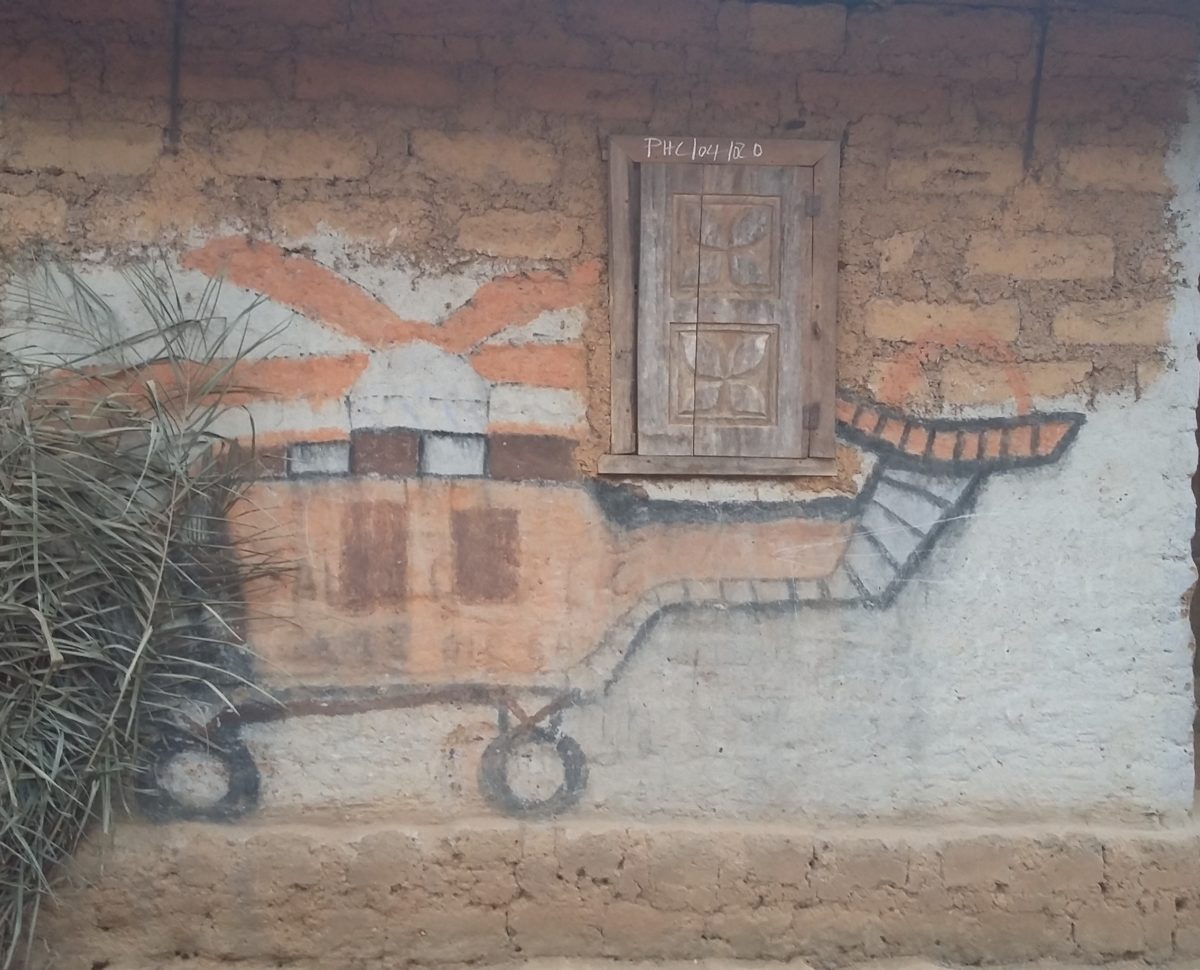

Alex Waterman and James Worrall
‘Order offers a highly valuable analytical tool to guide us through the complexities of conflict processes and a rich and vibrant research agenda is beginning to take shape which has the potential to take the study of civil war in exciting and productive new directions…’
The Civil War Paths project is distinctive in its focus on the multifaceted, nonlinear transitions between pre-conflict, conflict-era, and post-conflict dynamics. Across each stage, a myriad of social processes are at play in which a range of actors interact to shape how these transitions play out. Mapping out the interactions and the relations they shape is vital if we are to understand transitions within and between specific pre-, during, and post-conflict phases – or, more succinctly, the cycles and processes of civil wars.
In our inaugural Reimagining the Field article published in Civil Wars, we draw on our research on rebel governance, counterinsurgencies, and ceasefires to argue that the concept of ‘order’ offers a promising tool that frames and captures these interactions and processes. In the following paragraphs, we sketch out what is meant by order, how we think the ‘order turn’ in the civil wars literature can help us to map continuity, change, and nonlinearity with increasing granularity, and raise a key question about knowledge and civil war processes that the agenda raises.
So… what is order?
Broadly defined, order refers to a predictable set of behaviours governed by an agreed set of rules which regulate these behaviours. Applied to conflict, order can tell us a great deal about how these rules are created, which in turn offers insights into how power and authority functions and changes over time. For a long time, order was seen as almost synonymous with state power and control, influenced by Thomas Hobbes’ idea that only a Leviathan could provide order by regulating social life through coercive power. This had implications for how we thought about conflict; state failure was conflated with disorder, civil war with order’s collapse.
Yet order is about much more than just the state. A book we constantly turn to when thinking about this is Kate Fox’s Watching the English: The Hidden Rules of English Behaviour. The book documents the frankly bizarre rules governing social behaviour in England, such as the tacit social rules governing queuing in a pub. These are not rules emerging from the coercive diktats of state; instead, they are informally negotiated every day by members of the general public. While the state does play a role – in making it illegal to use violence, for example – these unwritten rules are largely upheld (and renegotiated) through tacit, largely informal processes. In different settings, we follow them, bend them, or participate in implicit social sanctions to uphold them. Order, then, is not just shaped by one actor or one form of power alone, but is a product of the negotiations between a mass of actors with different kinds of agency at different levels, which results in variations in micro-level order. Ultimately this patchwork of micro-orders creates larger forms of order, both social and political.
The civil wars literature, while less concerned with queuing in pubs, has increasingly thought about order beyond a state-centric lens. The field has increasingly started to think about ‘war zones as ordered pieces of territory’ in which a range of both armed and unarmed actors can shape the formal and informal rules governing social and political relations. Accounts of rebel governance explore how rebels – long seen as the agents of disorder –try to reshape order in local communities to suit their interests. Recent work on ‘armed orders’ depicts an array of relationships that can exist between governments, rebels, and political militias ranging from total war to containment, limited cooperation and alliance. ‘Order’ has also been utilised to understand the rules of seemingly ‘disorderly’ politics in cities like Karachi or Mogadishu, as well as the shifting internal politics of rebel groups. Each of these strands in the ‘order turn’ map out actors and relationships that make up a given form of order, discuss the conditions that shape how order emerges and try to identify the processes through which actors try to (re)shape them.
Opportunities for the study of civil war paths
Insights from the ‘order turn’ can help to advance our understanding of transitions across the pre- to post-war phases of civil war in a number of key ways:
Rethinking the grey areas between war and peace
Order can help us to go beyond war-peace dichotomies. It can help us see the continuities and changes which contribute to conflict, to see how conflict itself shapes and reshapes order, and to explore how pre-existing forms of order can outlive conflicts and reassert themselves in the post-conflict environment. Notions of ‘armed orders’ are also useful here in mapping the spectrum of relations that can exist between armed actors. Paul Staniland helpfully distinguishes between forms of armed hostility – for example between all-out ‘total war’ and more cautious forms of ‘containment’. Orders of containment, limited cooperation, and tighter forms of alliance may also be found in transitions into the post-conflict period, whether governed via formal ceasefires or more informal understandings. The armed order agenda’s recent expansion to include state relations with militias, political parties, and electoral politics promises to better capture the murky, often violent forms of contentious politics that we might trace through the conflict into the pre- or post-war periods and which can help us to understand the stability/instability of the socio-political orders which emerge. Recent works on order within ceasefires can tell us a great deal about the complexity of transitions from war to post-war. While ceasefires are often thought of as a distinct form of order in of themselves, Marika Sosnowski shows that different ceasefire agreements can consolidate very different kinds of order: from highly coercive ‘strangle contracts’ on one end of the spectrum, to vague, flexible, and largely aspirational ceasefires on the other. Even after an agreement is concluded, the actual form of order that exists on the ground is likely to continue to evolve. In the peculiar case of the Indo-Naga ceasefire, the formal rules of ceasefire were subverted and renegotiated from the beginning, and have oscillated between localised forms of cooperation, containment, and at times even outright conflict. In this case, order allows us to trace the shifting dynamics of state-rebel relations through what has often been viewed as a static ceasefire.
Processes and Pathways
As our understanding of relevant ordering actors has broadened to include rebels, criminal gangs, militias and the wider mass of non-state actors that make up the civilian population, our understanding of the processes shaping order in conflict zones has widened beyond violence to include bargaining, legitimation, and norm creation. Such processes are not distinct strategies to be selected, but occur in combination with one another and in relation to other actors, ordering structures, and ordering processes. They may be employed, as Tim Glawion theorises, to ‘threaten,’ ‘support’ or ‘protect’ other actors and indeed to create fluid or stable ordering effects, or to create specific impacts upon order, such as creating faits accomplis or pushing back against particular rules of a ceasefire. To borrow the title of our article in Civil Wars, shaping order is like ‘spinning multiple plates which all operate according to different rules of physics’. The rules of physics governing the plate-spinning reflect the structural influences of order, which influence whether and how the efforts to balance – the processes themselves – produce their desired effect. By mapping this ecosystem of actors, their own plate-spinning efforts and the laws of physics shaping them can tell us a great deal about how order evolves within and across the stages of conflict, giving us clearer insights into why and how transitions and developments occur along the pathways taken by civil wars.
A future question
How do actors understand the orders they try to influence?
It is important to avoid conflating ordering processes with deliberate, strategic acts. Clearly, actors want to shape order in intended ways, but they are not all-knowing automatons with a complete picture of the environment. They must try to generate knowledge of the orders they are attempting to shape if they are to try and mould it in intended ways, and to do this they need to engage with various other ordering actors. This is clearly likely to be an incredibly difficult process, shaped by internal processes (such as organisational culture, preferences, and perceptions) and external influences. Actors will also deliberately withhold information, while order’s ever-changing nature always precludes a perfect, up-to-date knowledge picture. This has led recent works to cast doubt on conflict parties’ ability to ever generate enough useful knowledge at all, particularly in external military interventions. However, if we are to understand how and whether civil war transitions occur in desirable ways, we need to better understand how actors try to understand order, communicate this within their institutions and with other actors, and then translate this into practice. This has been the focus of much of our research in recent years through both the Gerda Henkel funded project Dancing With Devils: How Militaries Integrate Understandings of Rebels and Militias into Counterinsurgency Doctrines. And, separately, a book project entitled Control Regimes: Knowledge, Violence and Complex Ordering Processes in Counterinsurgency which explores, across eight diverse cases, how the state has sought to generate and use knowledge of local order to reshape order within civil war to its benefit.

Concluding remarks
Just as ordering actors can never fully generate a complete knowledge picture of order on account of its sheer complexity, it is unlikely that we as analysts and scholars will be able to generate a complete and full understanding of order. This should not, however, deter us. Order offers a highly valuable analytical tool to guide us through the complexities of conflict processes and a rich and vibrant research agenda is beginning to take shape which has the potential to take the study of civil war in exciting and productive new directions.

